Meniscal repair: aftercare advice
Information for patients from Physiotherapy
You have had surgery to repair a torn meniscus.
This leaflet explains:
what the meniscus is
when you will be able to walk on your operated leg
how to look after your dressing
when you can resume your normal activities, such as driving and playing sports; and
what exercises will help strengthen your affected leg.
We hope this leaflet helps to answer some of the questions you may have. If you have any questions or concerns, please speak to your surgeon and / or physiotherapist.
What is the meniscus?
The meniscus is a C shaped structure, within both sides of the knee. It acts as a shock absorber, and its main role is to protect the bone.
The ACL is a tough band of tissue that runs diagonally within the knee. It helps to prevent:
forward movement; and
twisting of the tibia (shin bone) on the femur (thigh bone).
Also, with the help of your muscles, the ACL provides most of the knee’s stability.
-joint.jpg)
When you get home and for the first few days after your surgery
A meniscal repair is usually carried out as a day case, under a general anaesthetic (you are asleep for the procedure). General anaesthetic can temporarily affect your co-ordination and reasoning skills. For 48 hours after your surgery, do not:
drink alcohol
operate heavy machinery; or
sign legal documents.
When will I be able to walk on my operated leg?
After your operation, your surgeon will:
determine your weight bearing status; and
decide whether you need to wear a brace.
They will decide the type of brace and how long you need to wear it for. You must wear the brace under your clothing at all times. Only remove the brace when you are washing yourself.
Full weight bearing (FWB). You can put all your weight on your operated leg.
Partial weight bearing (PWB). You can put limited weight on your operated leg, as determined by surgeon.
Non-weight bearing (NWB). You must not put any weight on your operated leg.
Your weight bearing status is: ___________________________________________
Your physiotherapist will give you instructions after your surgery. They will also provide you with a pair of crutches and show you how to use them.
Please return the crutches to the hospital when they are no longer needed.
How do I look after my dressing?
Follow this advice, unless told otherwise by your doctor or ward staff.
Remove the crepe bandages 48 to 72 hours after your surgery.
The gauze dressing can remain on your knee for 2 weeks, if clean and dry until your wound review.
Ward staff will tell you whether you have stitches or dissolvable sutures. They will also explain how they should be managed.
My knee hurts and is swelling, is this normal?
Yes. It is normal to feel some pain and swelling of your knee following your operation.
Continue to take pain relief as prescribed / advised.
To reduce swelling, elevate (raise) your leg when resting.
Once the crepe bandage has been removed, place an ice pack on your knee for 15 minutes every hour. The ice will help control the swelling. You can use an ice pack, or a pack of frozen peas wrapped in a damp towel.
Caution: ice can cause burns. Do not put it directly on your skin, always use a towel. Please note that once defrosted do not eat the peas.
Excessive swelling may mean that you are doing too much. Do not stop walking or doing the exercises, just change how many you do.
When can I drive again?
When you can drive again depends on your weight bearing status / brace.
If fully weight bearing you should be able to drive for short periods of time 7 to 14 days after your operation. However, this will depend on:
whether your knee is pain free; and
you have enough strength to control the foot pedals and make an emergency stop.
Do not drive if you are wearing a brace.
Contact your car insurance company to discuss this in more detail.
When can I return to work?
This depends on your weight bearing status / brace, and your job.
If you have a desk job you can return to work quickly.
If you have a manual job you may need more time off.
If you have any concerns, please speak to your consultant and / or physiotherapist for advice.
Will I have a follow-up appointment at the hospital?
Yes. You will have a follow-up appointment with your consultant. The appointment is usually 2 to 6 weeks after your operation.
You will be referred for outpatient physiotherapy. This will start 2 to 6 weeks after your operation. When you start physiotherapy depends on your weight bearing status / brace.
When can I start playing sports again?
This will depend on the sport. Your outpatient physiotherapist and consultant will advise you on this.
Advice for going up and down stairs using crutches
If you are able to weight bear, please go up and down stairs one step at a time. If possible, use one crutch and one rail / bannister, as this is always safer.
Going up and down stairs using one crutch
-
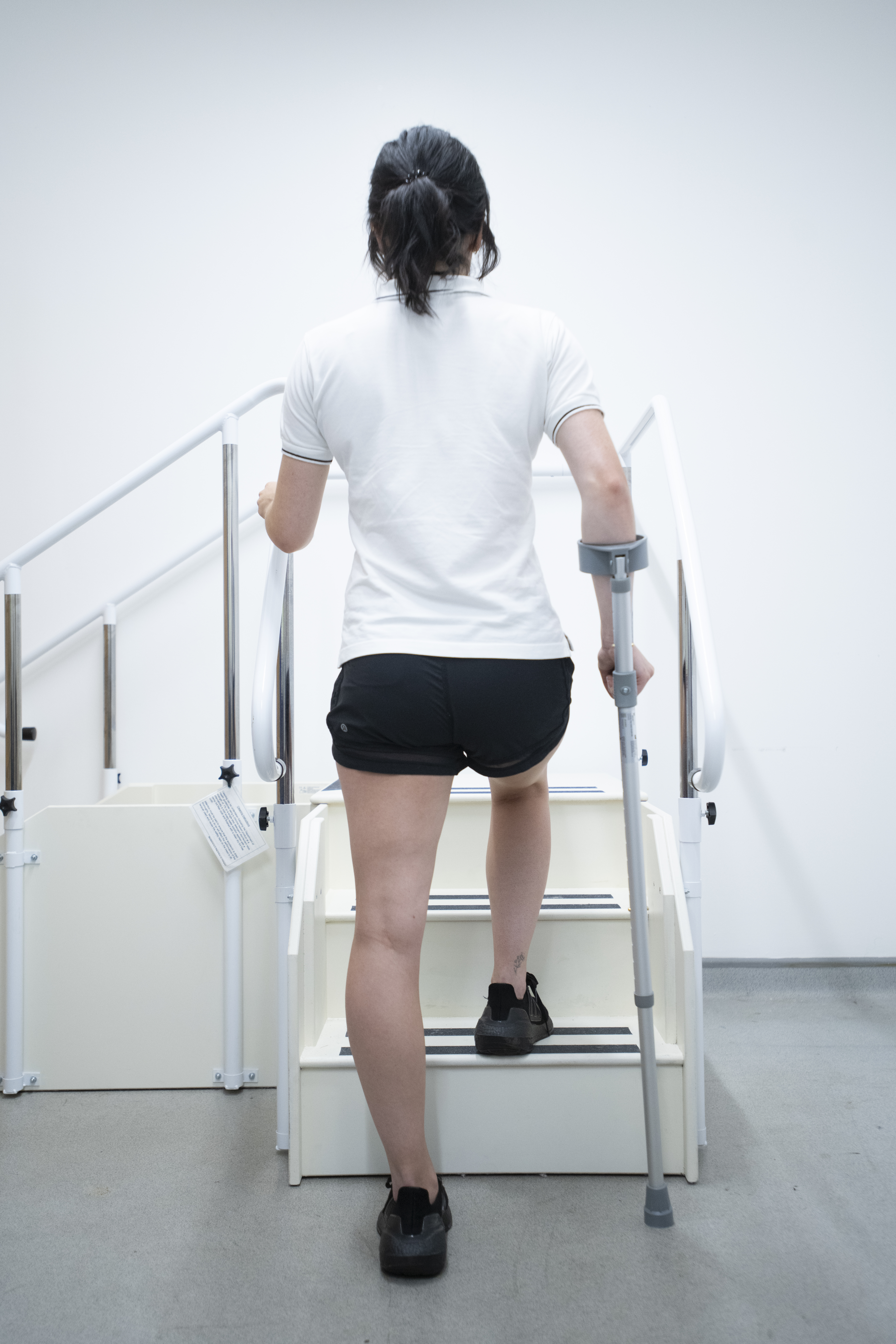 Lead with your good leg.
Lead with your good leg. -
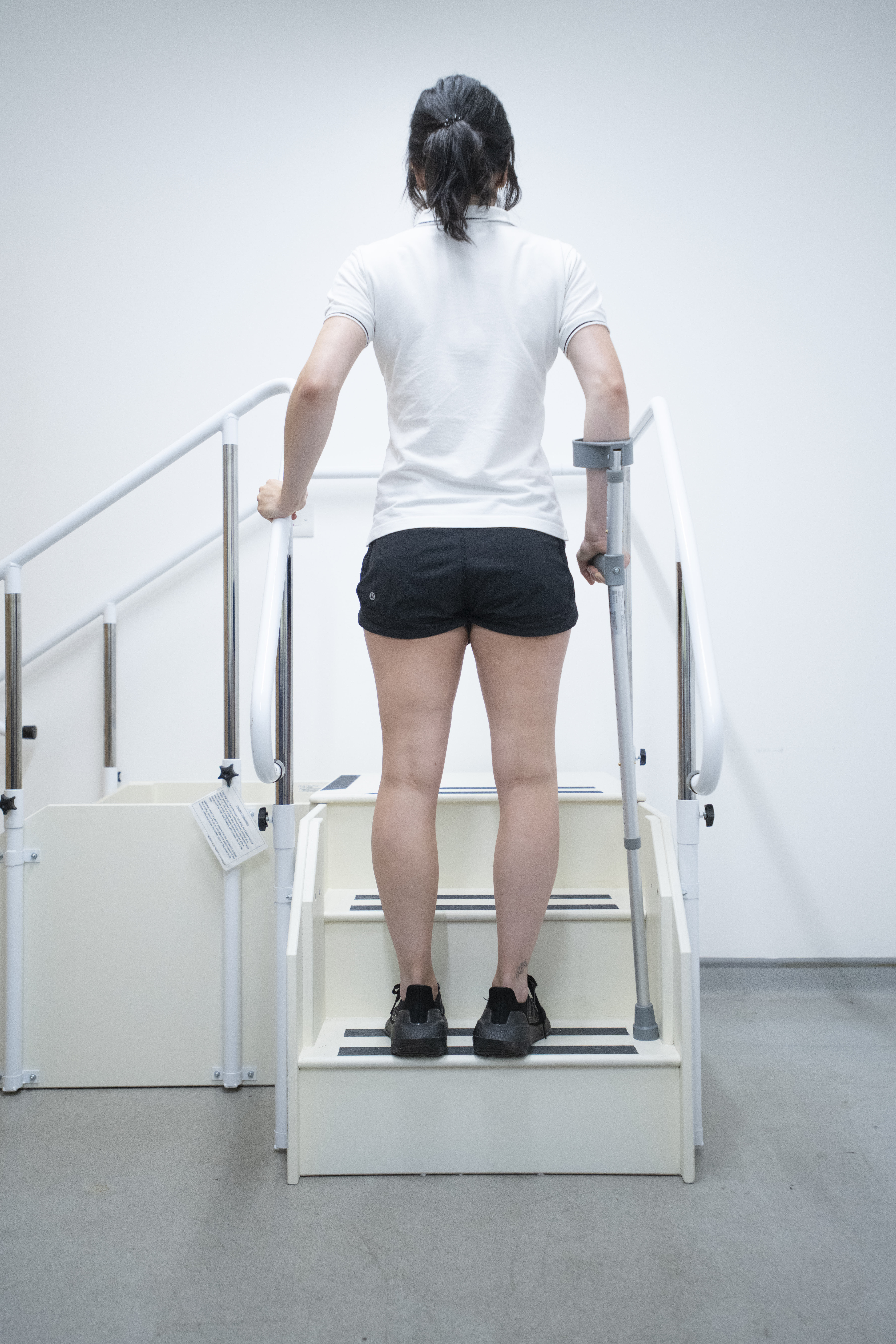 Bring the crutch and operated leg up to meet your good leg.
Bring the crutch and operated leg up to meet your good leg. -
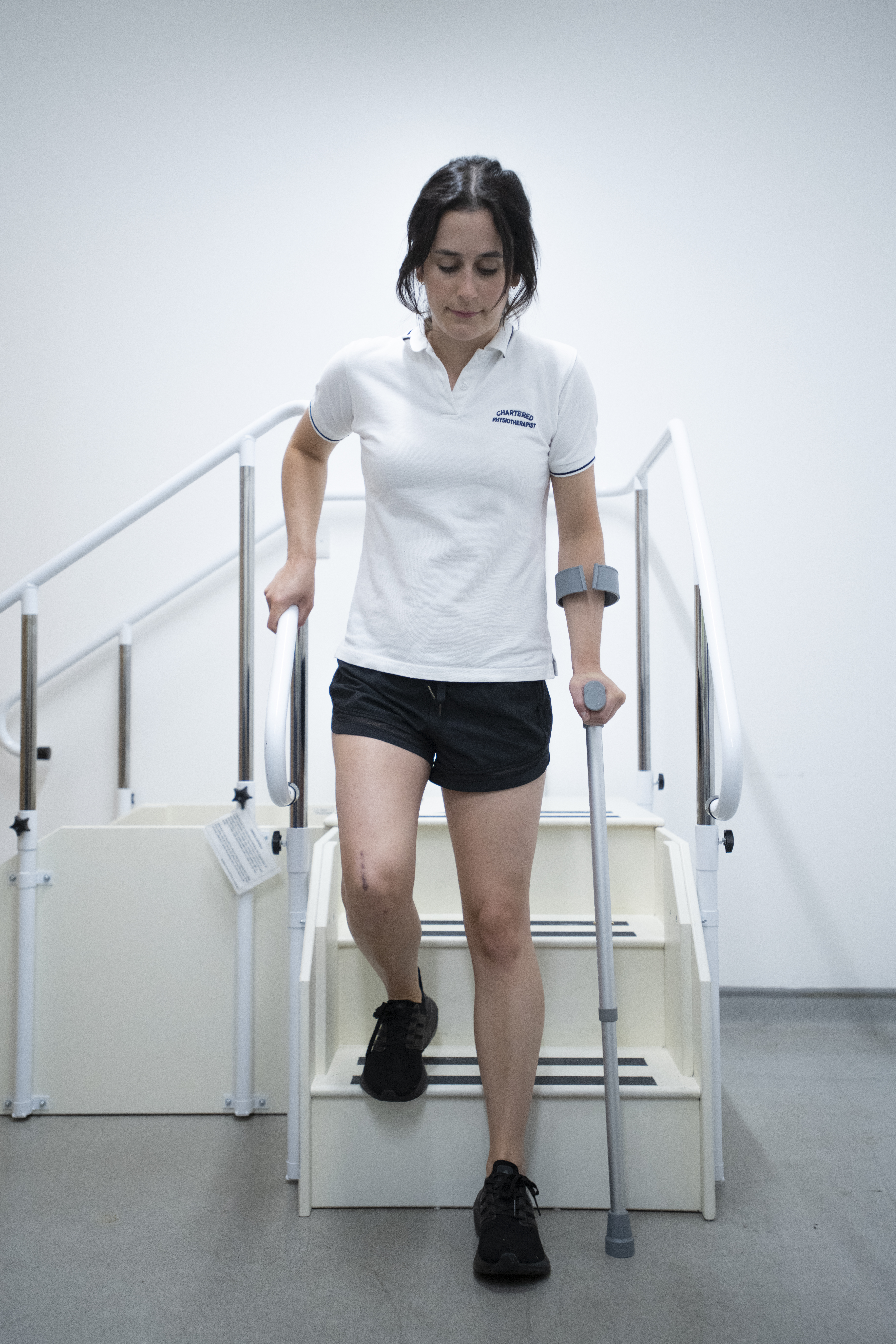 The crutch and your operated leg go down to the step first.
The crutch and your operated leg go down to the step first. -
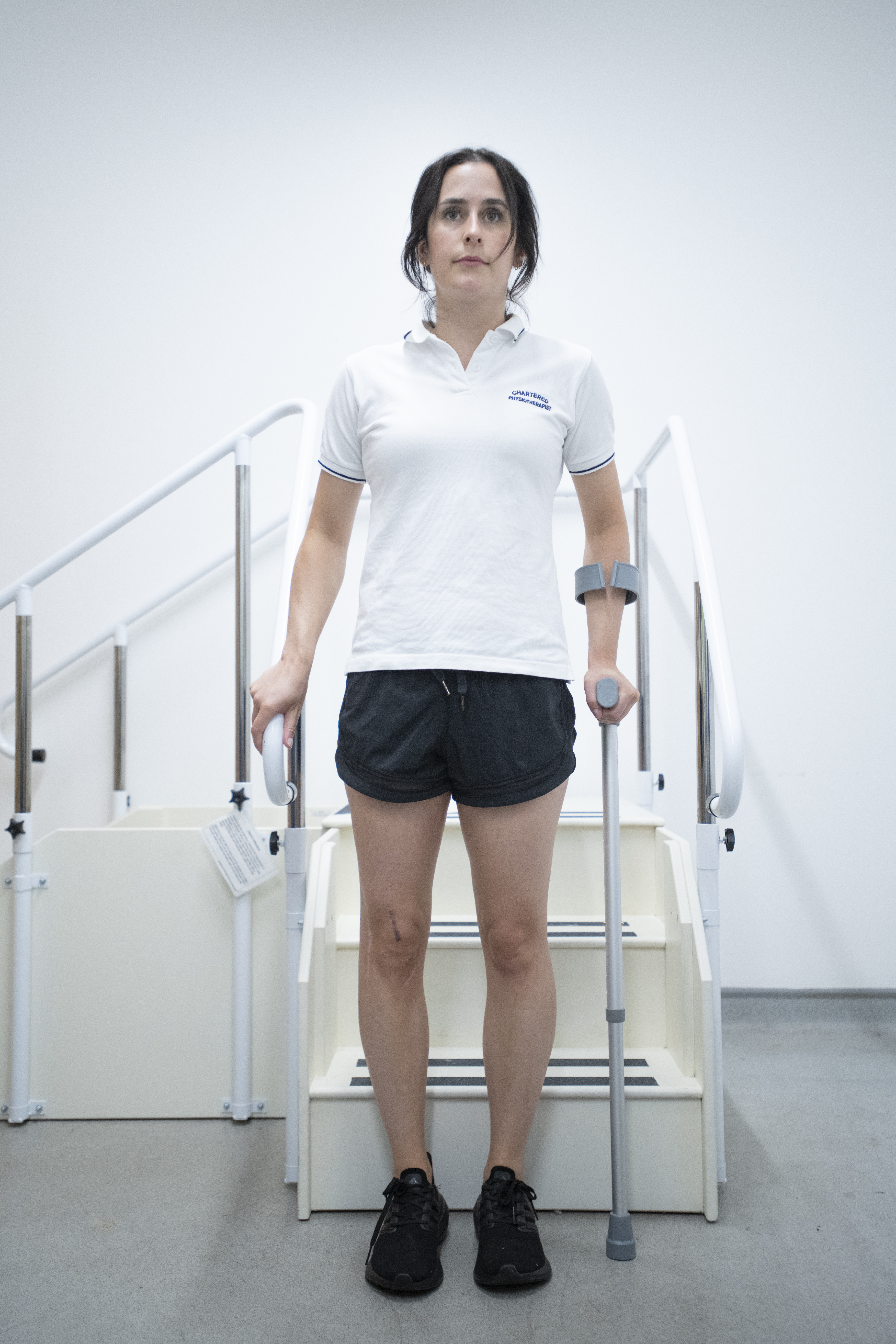 Follow with your good leg.
Follow with your good leg.
Going up and down stairs using two crutches
-
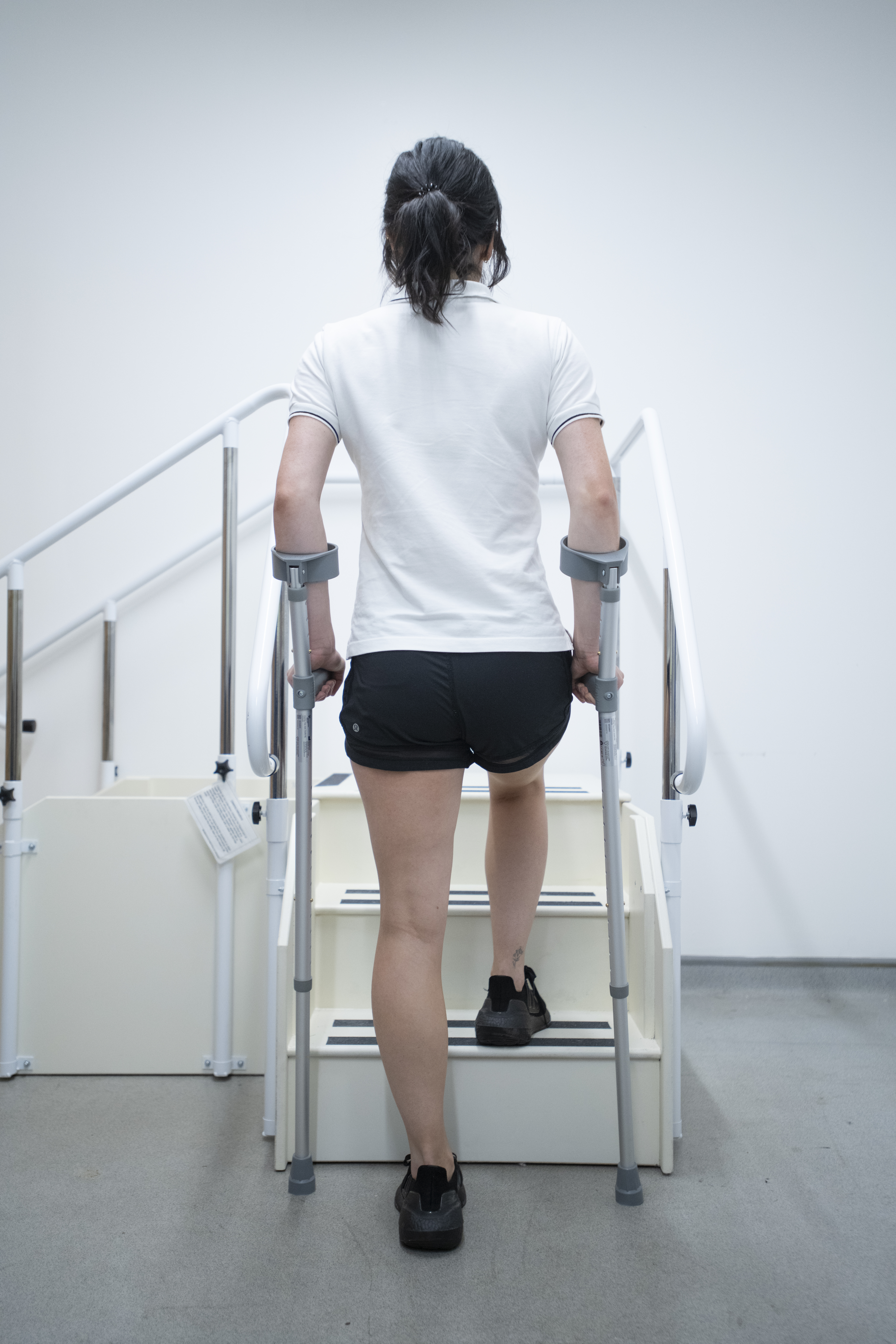 Lead with your good leg.
Lead with your good leg. -
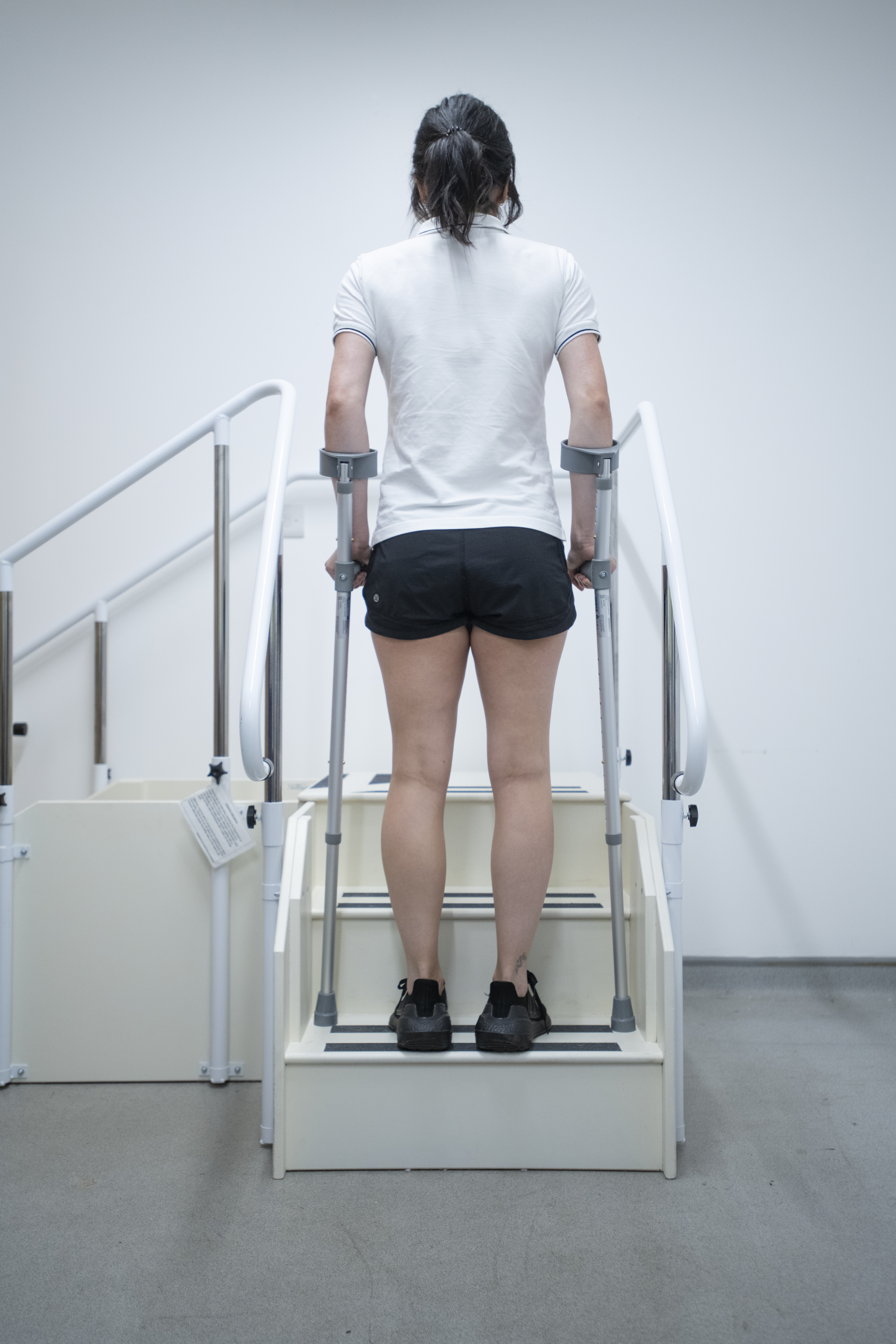 Bring the crutches and your operated leg up to meet your good leg.
Bring the crutches and your operated leg up to meet your good leg. -
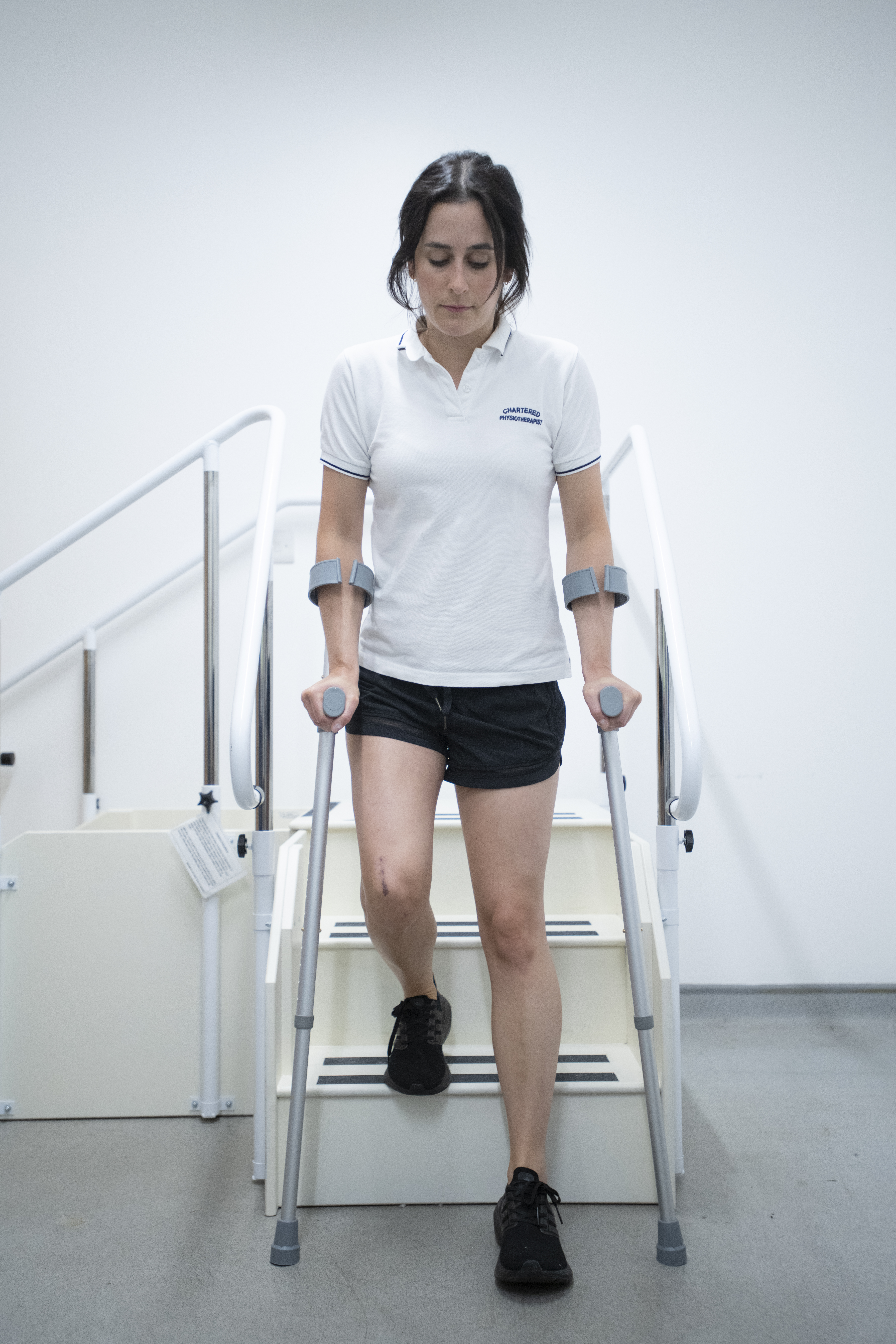 The crutches and your operated leg go down to the step first.
The crutches and your operated leg go down to the step first. -
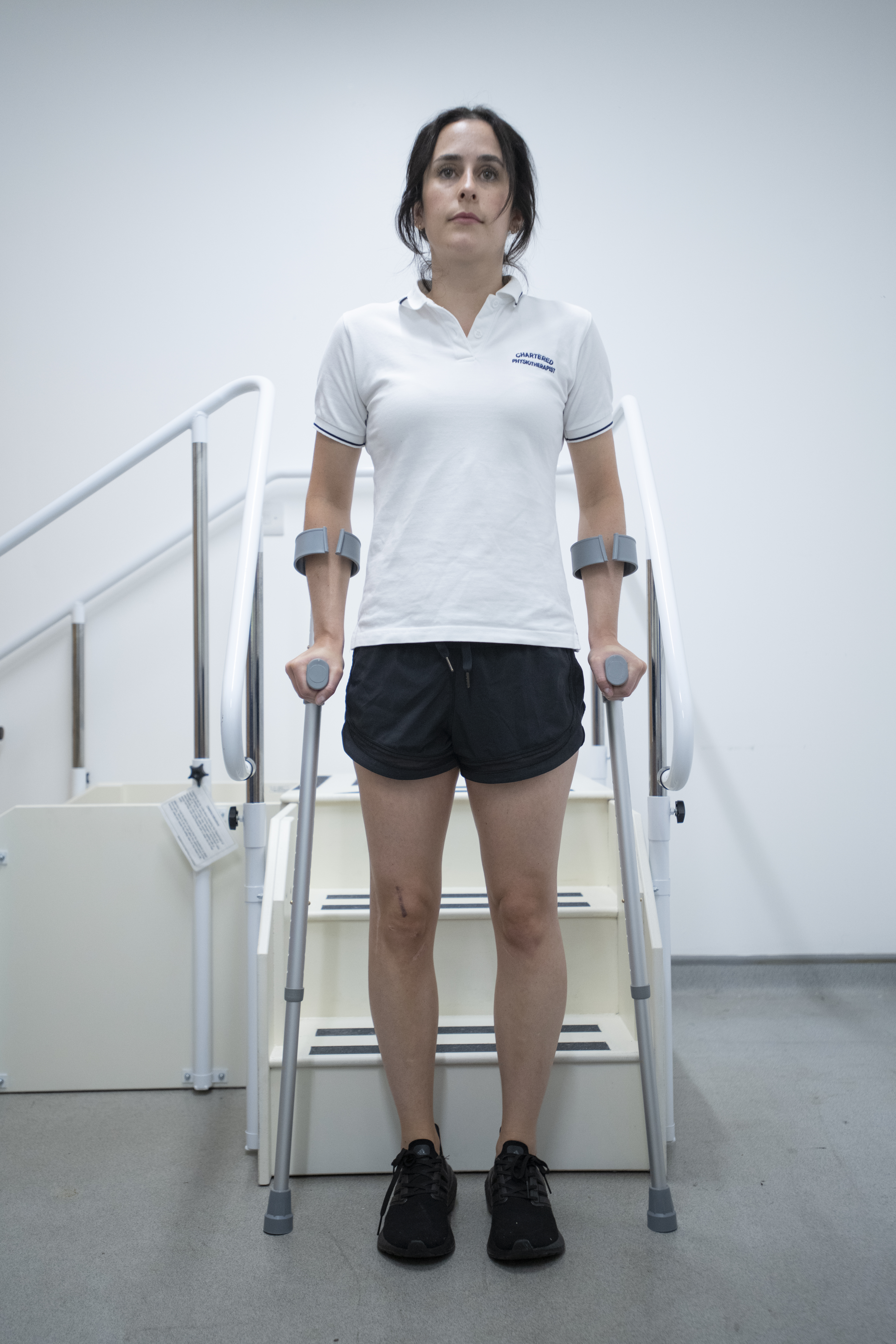 Followed by your good leg.
Followed by your good leg.
If you are NWB, you will not be able to weight bear through your operated leg. Instead, you will have to hop up and down stairs using one or two crutches. Your physiotherapist will practice this with you.
Physiotherapy exercises following meniscal repair
The exercises you can do following your operation will depend on your weight bearing status / brace.
Your physiotherapist will teach you the exercises before you leave hospital.
Only complete the ticked exercises 3 times daily.
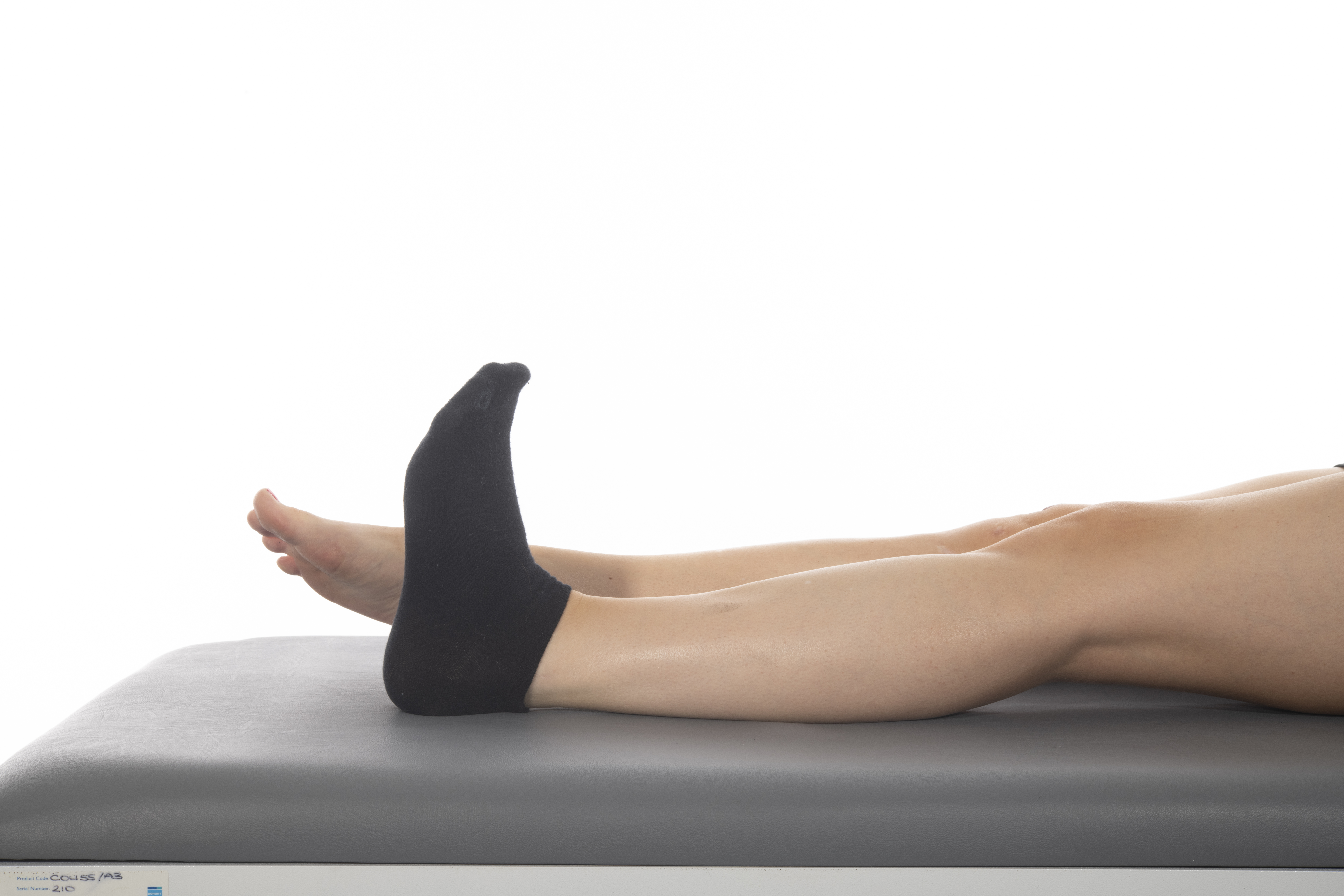
Exercise 1
Lie on your back, on a bed, with your legs straight.
Bend your ankle and point your toes to the ceiling. Push your operated knee down firmly against the bed.
Hold for 10 seconds, and slowly relax.
Repeat 10 times
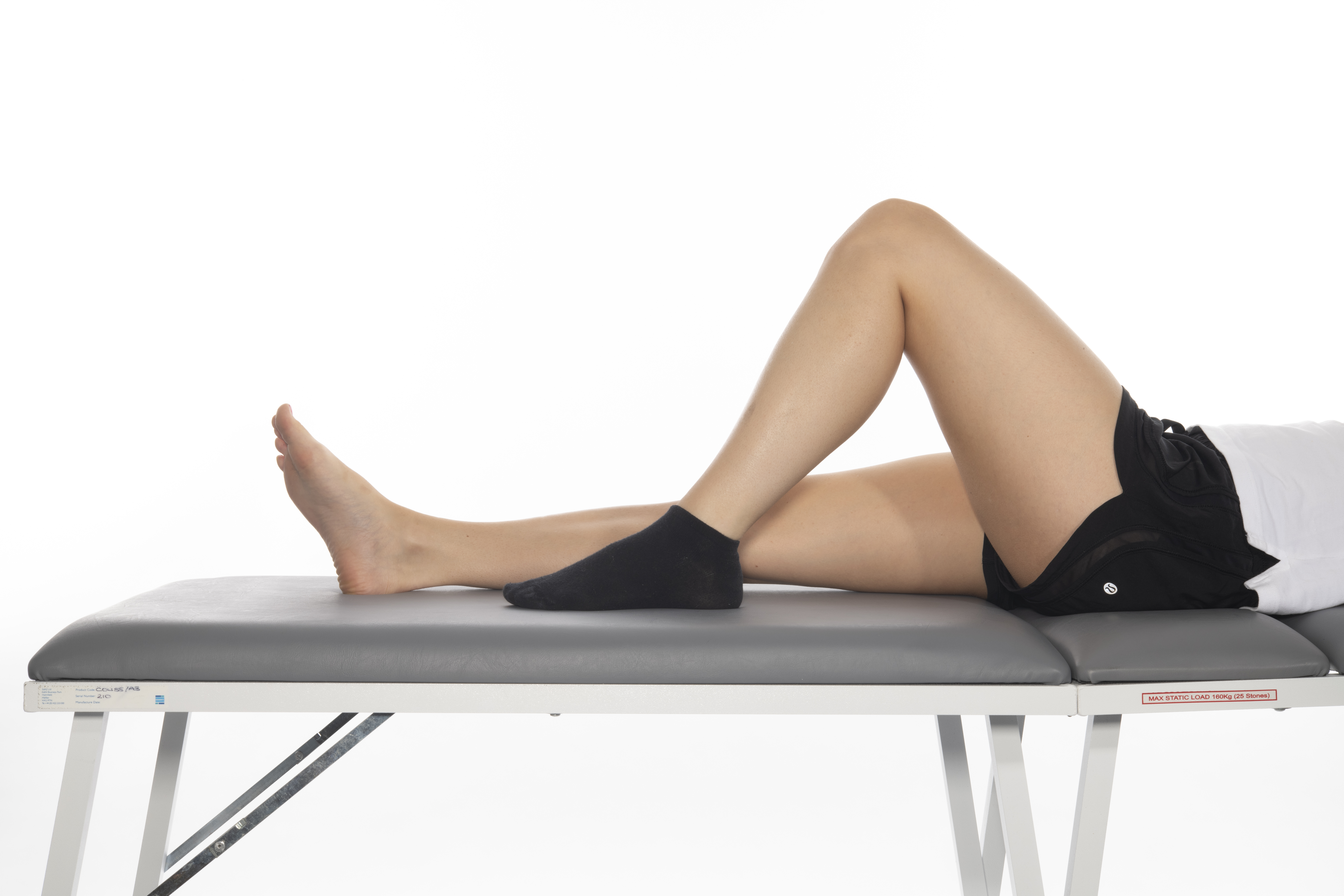
Exercise 2
Lie on your back, on a bed.
Bend and straighten your operated leg as much as possible.
Repeat 10 times.
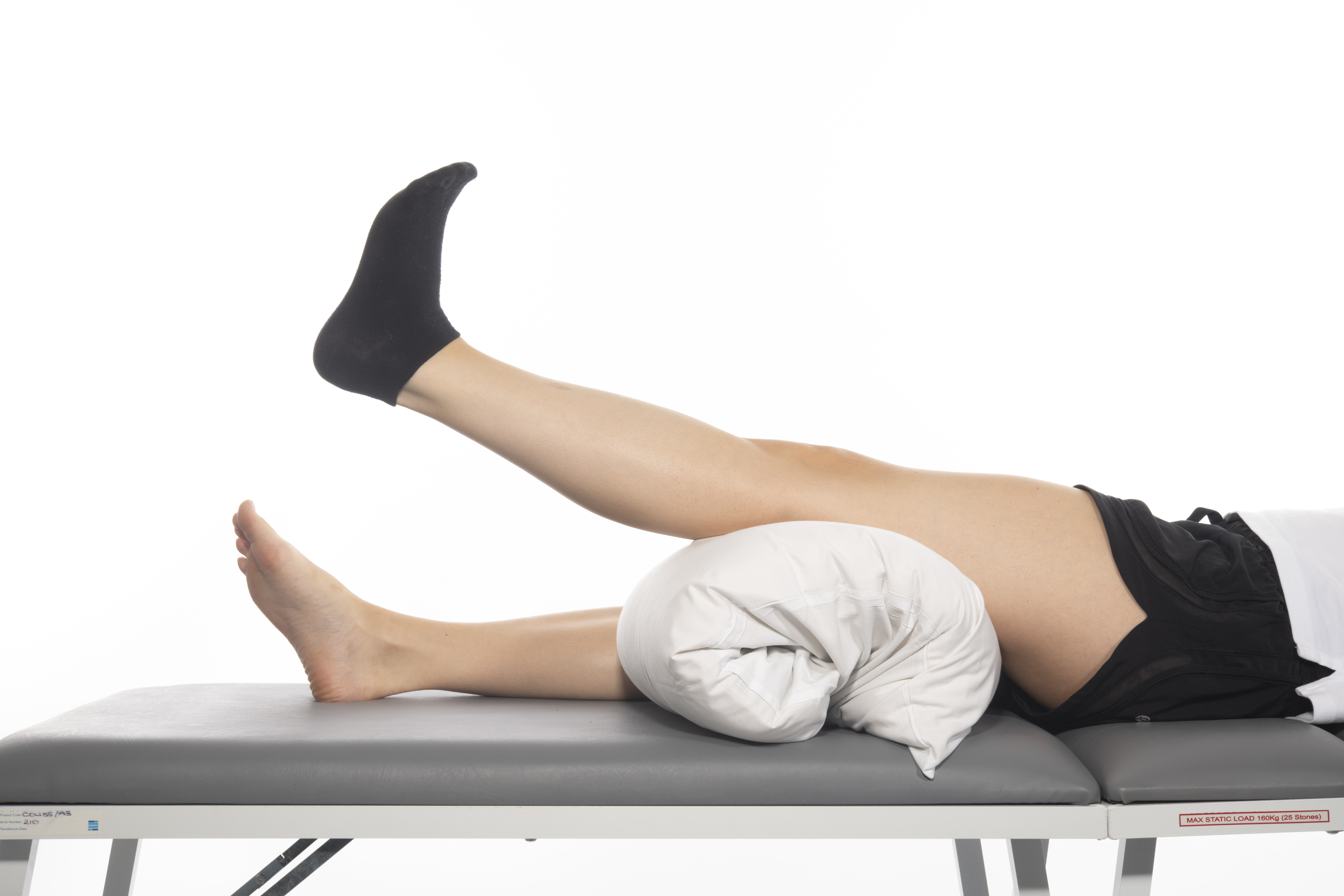
Exercise 3
Lie on your back, on a bed.
Place a rolled towel under your operated knee
Lift your heel off the bed to straighten your knee (keep the back of your operated knee on the towel).
Try and hold for 10 seconds, and slowly lower.
Repeat 10 times.
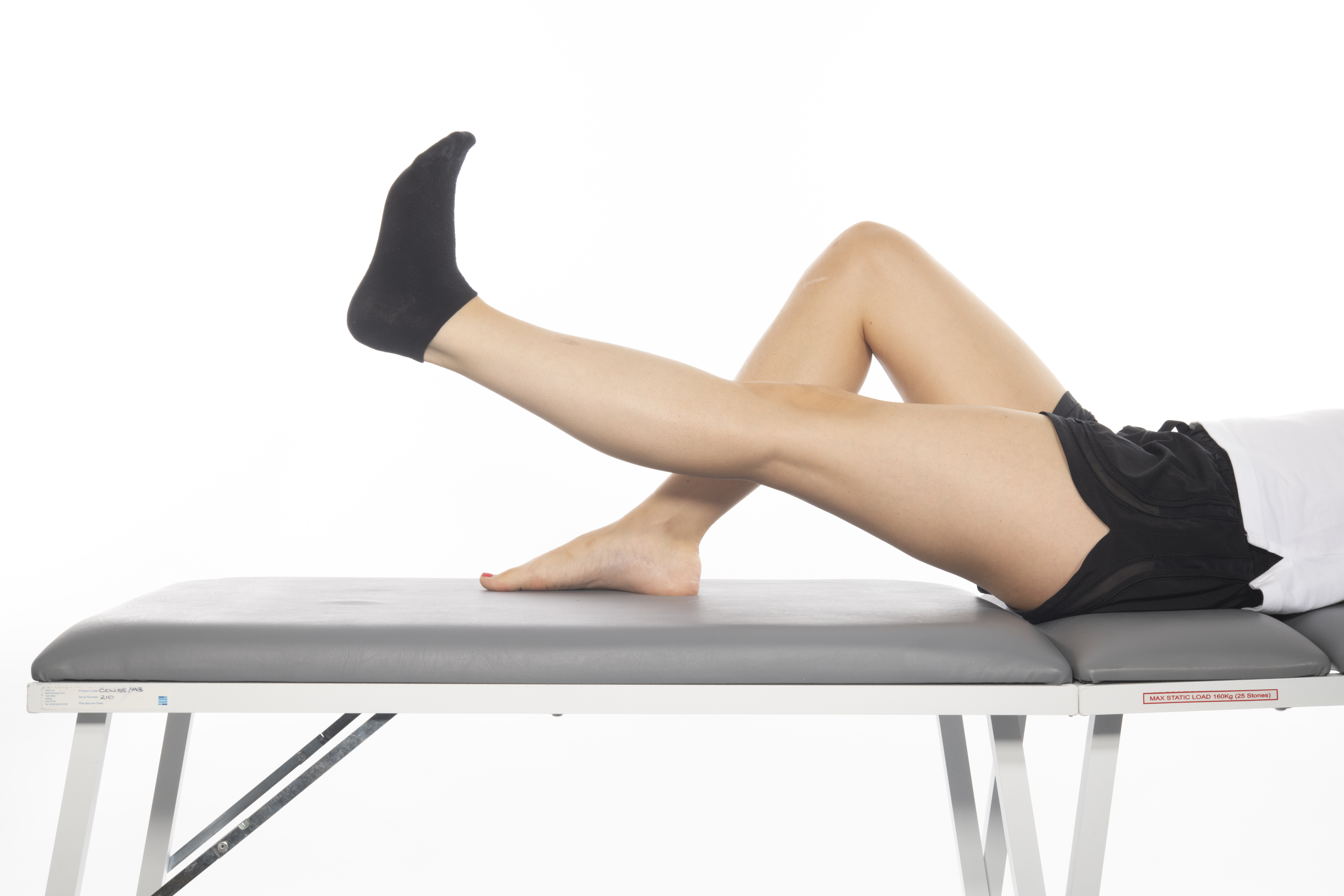
Exercise 4
Lie on your back, on a bed.
Lift your operated leg off the bed. Keep your knee straight and toes pulled up.
Slowly lower your leg.
Progress to holding your leg in this position for 10 seconds.
Repeat 10 times.
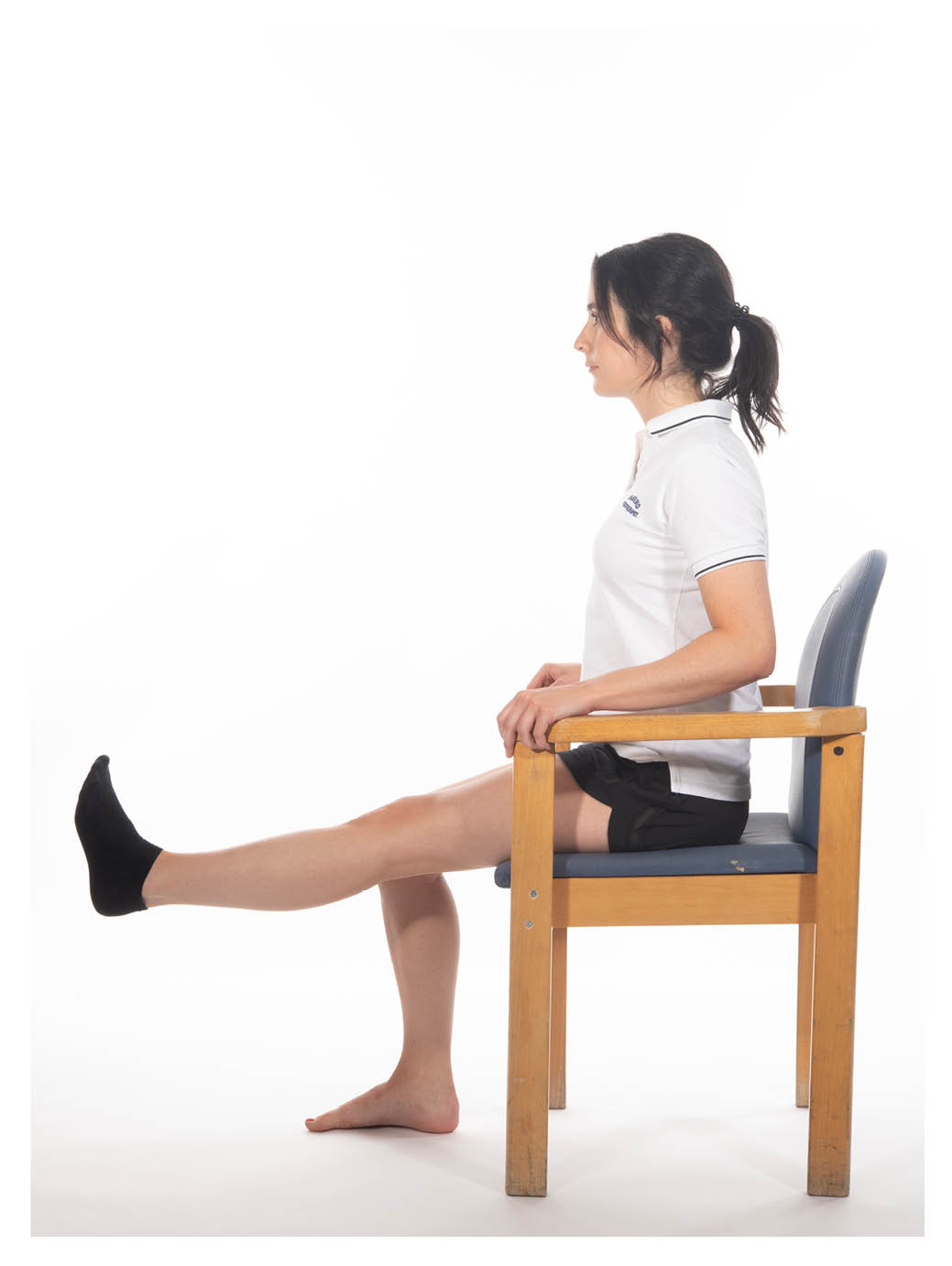
Exercise 5
Sit on a chair.
Lift your operated leg off the floor, to straighten your operated knee.
Try holding this position for 10 seconds.
Slowly lower your leg.
Repeat 10 times.
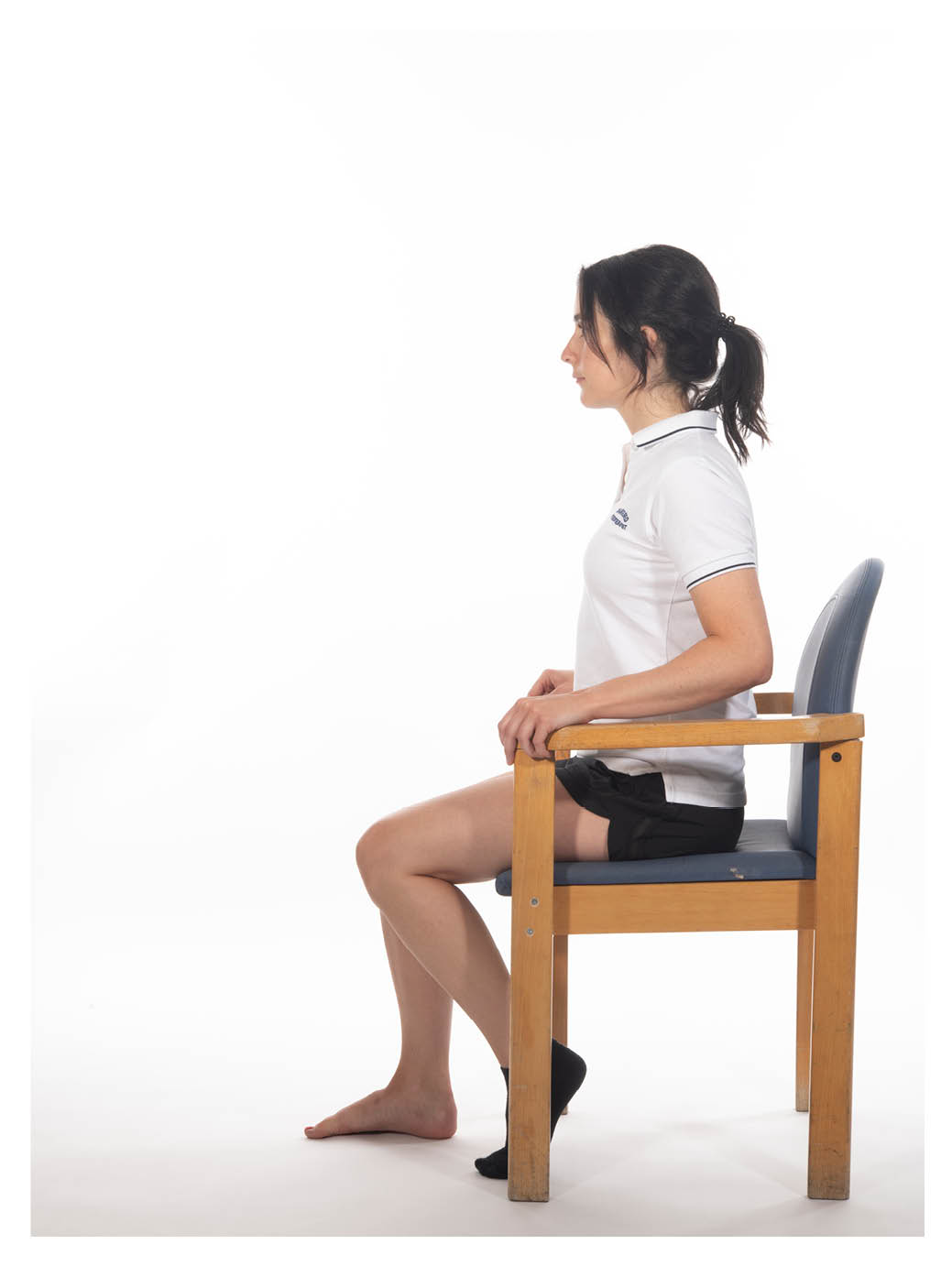
Exercise 6
Sit on chair with your feet on the floor.
Bend your operated knee back as much as possible.
Repeat 10 times.
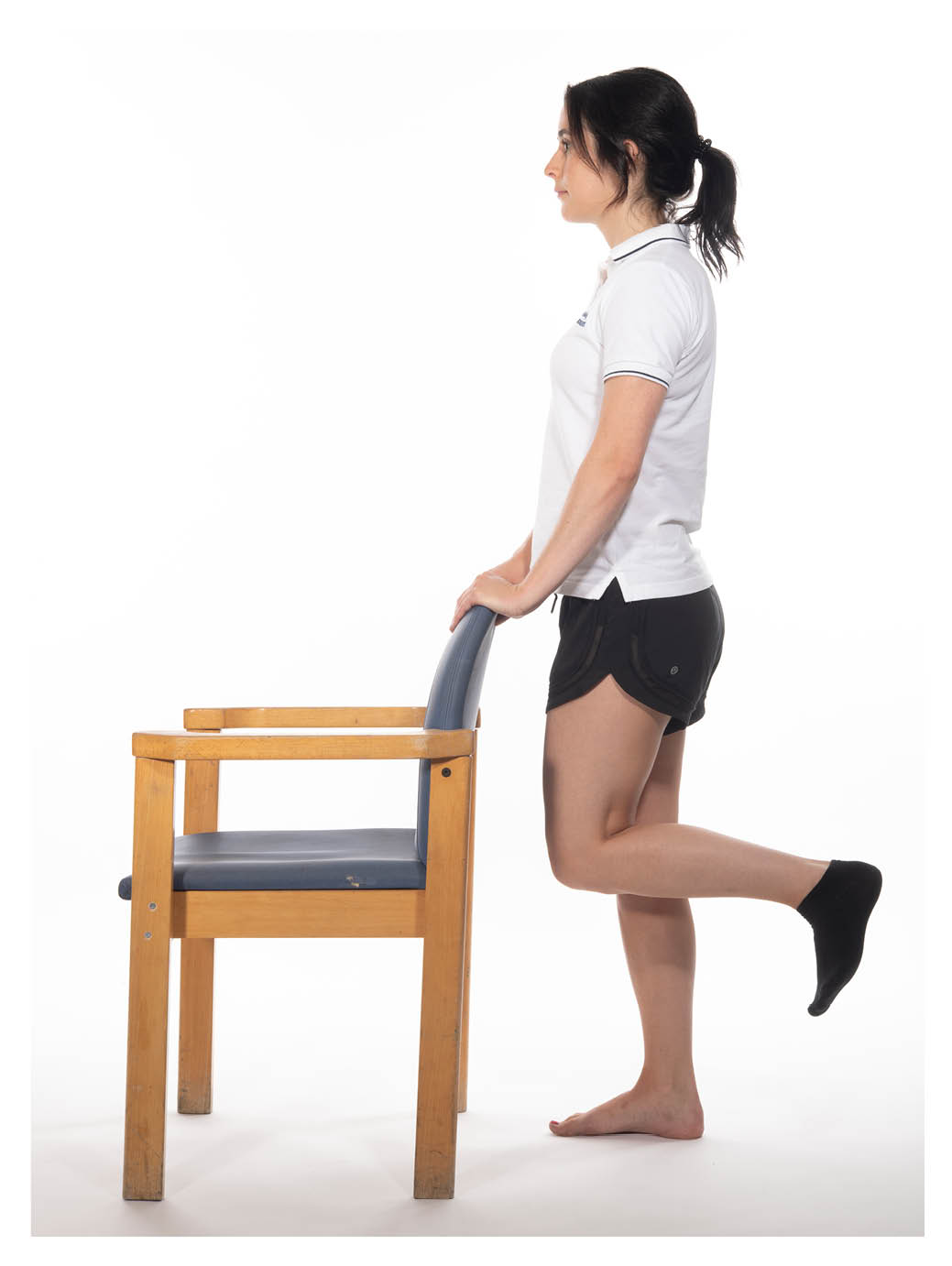
Exercise 7
Stand, holding onto a chair for support.
Bend your knee and lift your foot off the floor towards your buttocks.
Try to hold this position for 10 seconds.
Lower your foot to the floor.
Repeat 10 times.
What if I have any queries or concerns when I return home?
If you have any queries or you have increased pain after surgery, please contact one of the following and speak to a member of staff.
Elective Orthopaedic Centre Pre-assessment, Kent and Canterbury Hospital, Canterbury
Telephone: 01227 783114Invicta Ward, Kent and Canterbury Hospital, Canterbury
Telephone: 01227 866392
Please remember that each patient is individual and will recover differently. Your progress largely depends on how much effort you put in. Self-motivation is crucial to achieve the best outcome.
When no longer needed, please return your crutches to the Elective Orthopaedic Centre at Kent and Canterbury Hospital.
What do you think of this leaflet?
We welcome feedback, whether positive or negative, as it helps us to improve our care and services.
If you would like to give us feedback about this leaflet, please fill in our short online survey. Either scan the QR code below, or use the web link. We do not record your personal information, unless you provide contact details and would like to talk to us some more.
If you would rather talk to someone instead of filling in a survey, please call the Patient Voice Team.
Patient Voice Team
Telephone: 01227 868605
Email